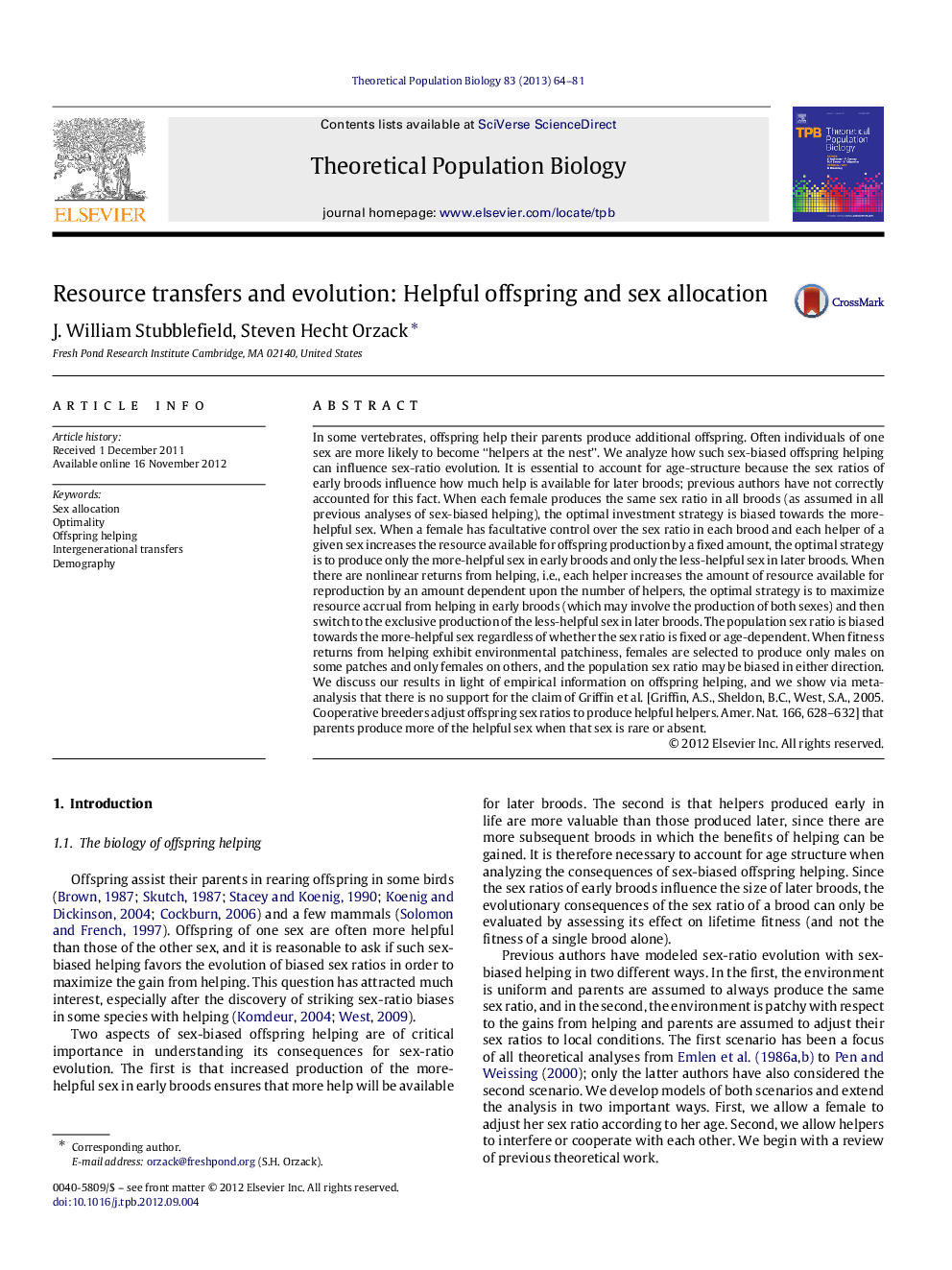| کد مقاله | کد نشریه | سال انتشار | مقاله انگلیسی | نسخه تمام متن |
|---|---|---|---|---|
| 4502482 | 1624169 | 2013 | 18 صفحه PDF | دانلود رایگان |

In some vertebrates, offspring help their parents produce additional offspring. Often individuals of one sex are more likely to become “helpers at the nest”. We analyze how such sex-biased offspring helping can influence sex-ratio evolution. It is essential to account for age-structure because the sex ratios of early broods influence how much help is available for later broods; previous authors have not correctly accounted for this fact. When each female produces the same sex ratio in all broods (as assumed in all previous analyses of sex-biased helping), the optimal investment strategy is biased towards the more-helpful sex. When a female has facultative control over the sex ratio in each brood and each helper of a given sex increases the resource available for offspring production by a fixed amount, the optimal strategy is to produce only the more-helpful sex in early broods and only the less-helpful sex in later broods. When there are nonlinear returns from helping, i.e., each helper increases the amount of resource available for reproduction by an amount dependent upon the number of helpers, the optimal strategy is to maximize resource accrual from helping in early broods (which may involve the production of both sexes) and then switch to the exclusive production of the less-helpful sex in later broods. The population sex ratio is biased towards the more-helpful sex regardless of whether the sex ratio is fixed or age-dependent. When fitness returns from helping exhibit environmental patchiness, females are selected to produce only males on some patches and only females on others, and the population sex ratio may be biased in either direction. We discuss our results in light of empirical information on offspring helping, and we show via meta-analysis that there is no support for the claim of Griffin et al. [Griffin, A.S., Sheldon, B.C., West, S.A., 2005. Cooperative breeders adjust offspring sex ratios to produce helpful helpers. Amer. Nat. 166, 628–632] that parents produce more of the helpful sex when that sex is rare or absent.
Journal: Theoretical Population Biology - Volume 83, February 2013, Pages 64–81